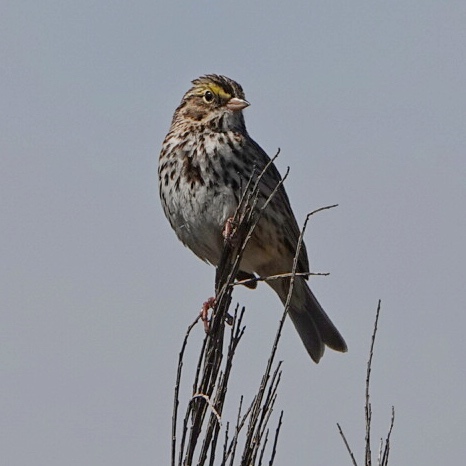
Though they are presently the only species in the genus Passerculus, there are many different kinds of Savannah Sparrows! Depending on which resource you are looking at there may be as many as 19 subspecies of this bird, although it seems likely that at least 3-4 of those will be elevated to full species status. They often exhibit natal philopatry, which is the strong tendency to return to their birthplace for breeding. It is thought that this shrinking of genetic diversity in a given area has been the evolutionary force driving their differentiation into a plethora of subspecies.
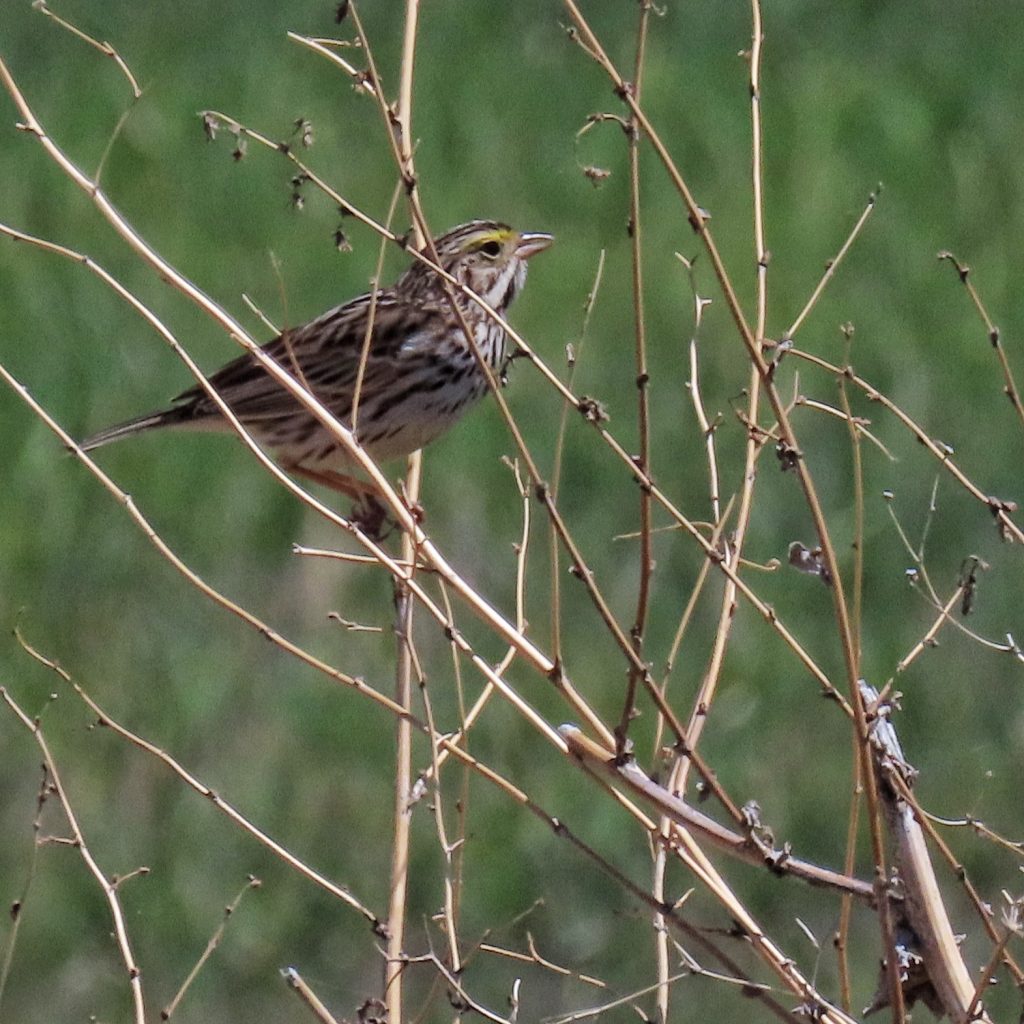
Passerculus sandwichensis are ground foraging birds, and can be secretive when hunting food. They seem to prefer running into cover when disturbed, but aren’t hesitant to fly when caught in the open, doing so just above the brushtops. Males are prolific singers during mating times, and will stand their perch on brush, shrubs, or fences, when so engaged, allowing relatively close approach.
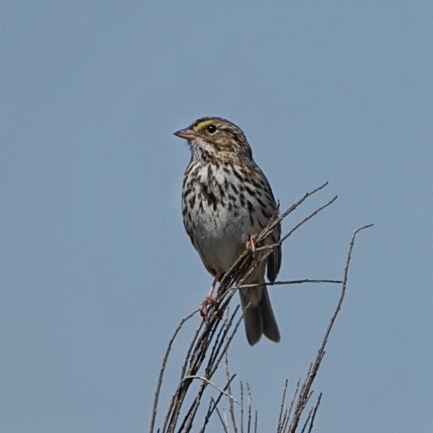
This is a handsome sparrow with fairly bold patterning, which nonetheless offers good camouflage when they are on the ground. But, at least early in the mating season, they are not a hard bird to find, with males singing lustily from many an exposed perch in their open habitat. And they can be an easy bird to identify, the combination of yellow lores/eyebrow and streaked breast being diagnostic in our region. Unfortunately the yellow is not always noticeable or present, and then you have to work a little harder.
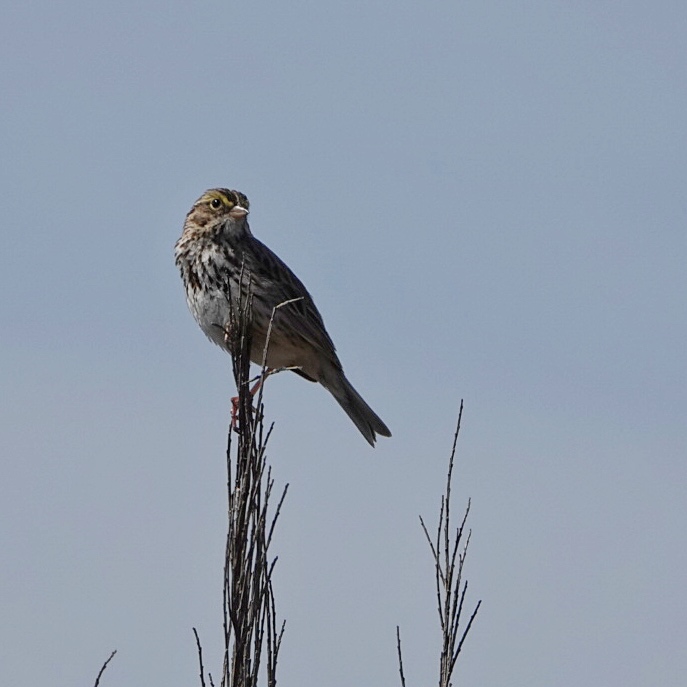
Description– Medium sized sparrow (5.5-6” tall) with a white or buff colored, finely streaked breast with small breast spot; brown crown with narrow, light colored median strip; usually, but not always, with yellow lores and eyebrow; dark eyeline; brown tail with dark streaks; brown wings and back with dark streaks; pink bill.
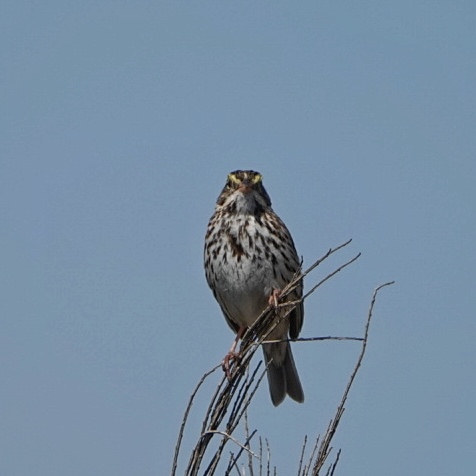
Similar species-Song Sparrow darker, wider streaks on a grayer breast, larger breast spot, lacks yellow lores; Lincoln’s Sparrow smaller, more buffy overall, lacks dark streaking of tail, lacks yellow lores; Vesper Sparrow has less breast streaking, has a chestnut brown ‘shoulder’, has white on outside of tail, lacks yellow lores.
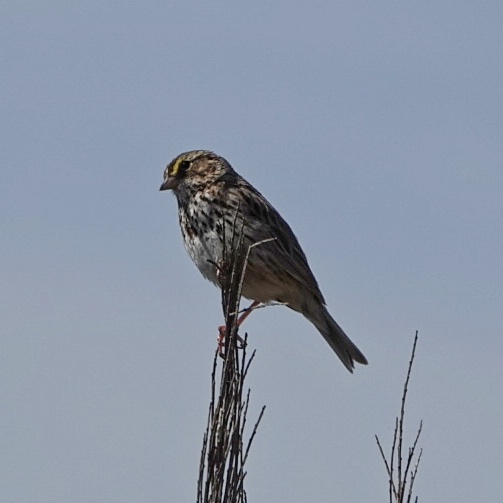
Habitat– Grassy, shrubby, open areas, including agricultural fields and mountain meadows, up to 7,000’ elevation.
Range-North America; region wide from April to September.
Eats-Seeds and berries year around, and insects when available, especially targeting them during breeding season.
Eaten by-Carnivorous mammals of all sorts prey on the young, and bird eating raptors attack chicks and adults.
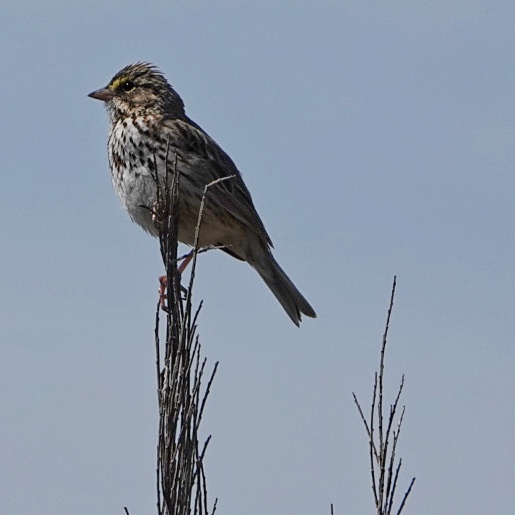
Reproduction– Can be either monogamous or polygamous, but successful breeders tend to pair again the following year; builds a cup nest on the ground, usually in dense and/or overhanging foliage; clutch size 4-5 eggs, incubation 10-13 days, young leave nest at 10-12 days, but cannot fly; The parents must gather more than their own body weight of food each day to sustain themselves and their chicks, while they are in the nest; they continue to feed the young until they fledge, which is usually about 3 weeks after hatching.
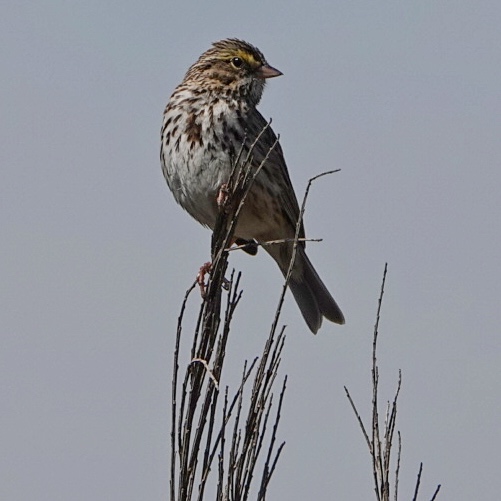
Adults active-They are primarily in our region during breeding season, and I’ve never seen one here between November and March, but I have seen reports of year around populations in the Willamette Valley, Puget Trough, Columbia Basin, and sw BC.
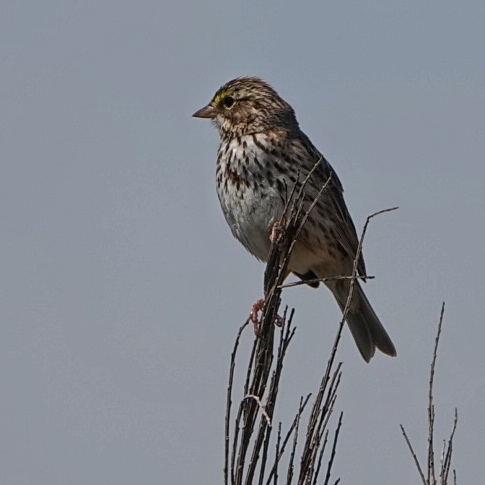
Etymology of names–Passerculus is a Latin word for sparrow. The specific epithet sandwichensis is a bit of a mystery. This appellation is usually given to organisms associated with the Sandwich Islands (Hawaii), but I can’t find a connection for this bird to that locale. Possibly it was named for John Montagu, 4th Earl of Sandwich, who used his position as First Lord of the Admiralty to secure funds for various expeditions. But I cannot seem to confirm anything for sure. The common name Savannah Sparrow comes from Savannah, Georgia, the location of one of the first specimens of this species that was collected.
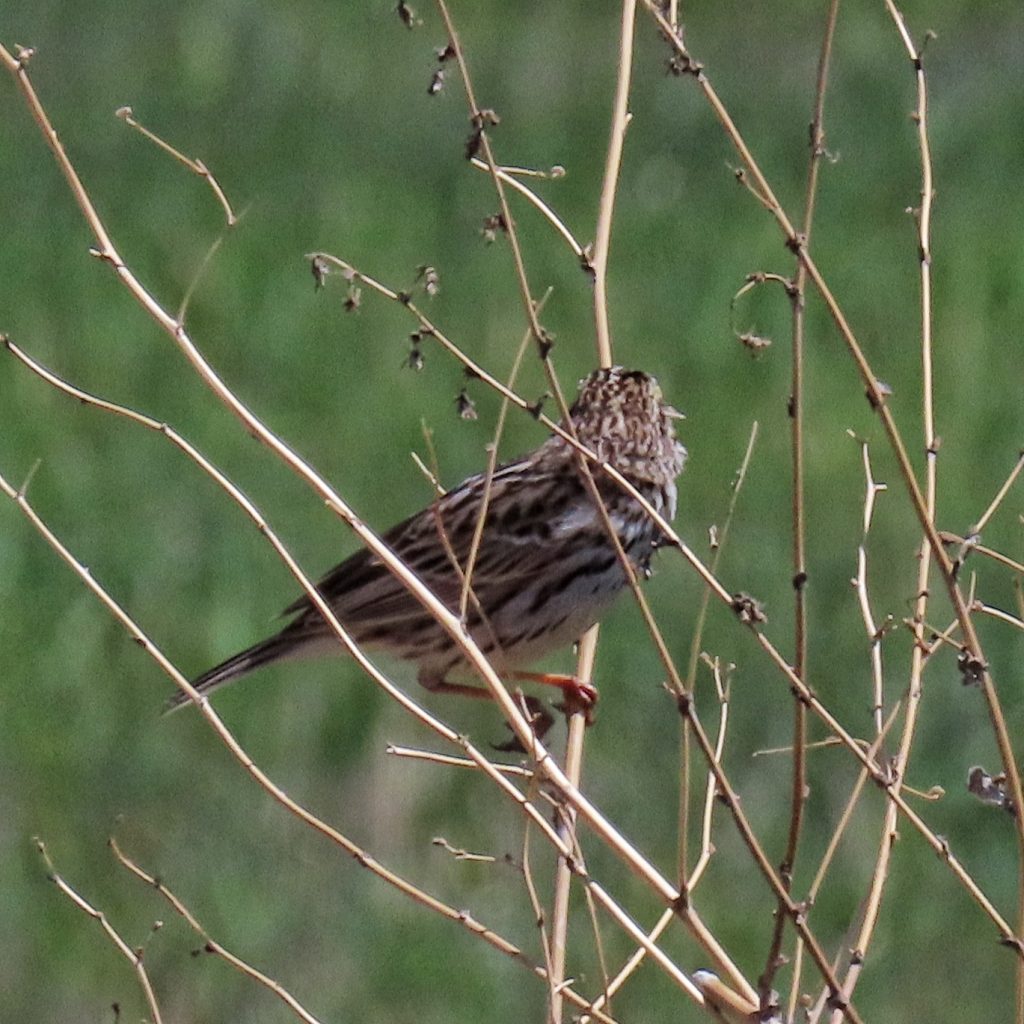
https://www.allaboutbirds.org/guide/Savannah_Sparrow/overview
https://www.birdweb.org/birdweb/bird/savannah_sparrow
https://www.audubon.org/field-guide/bird/savannah-sparrow
https://www.suzannemmatheson.com/updates/passerculus-sandwichensis-savannah-sparrow#/
https://www.allaboutbirds.org/guide/Savannah_Sparrow/id
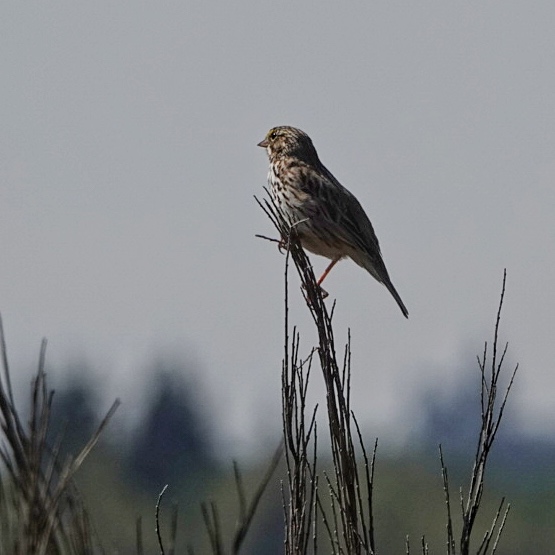
1 thought on “Passerculus sandwichensis (Savannah Sparrow)”